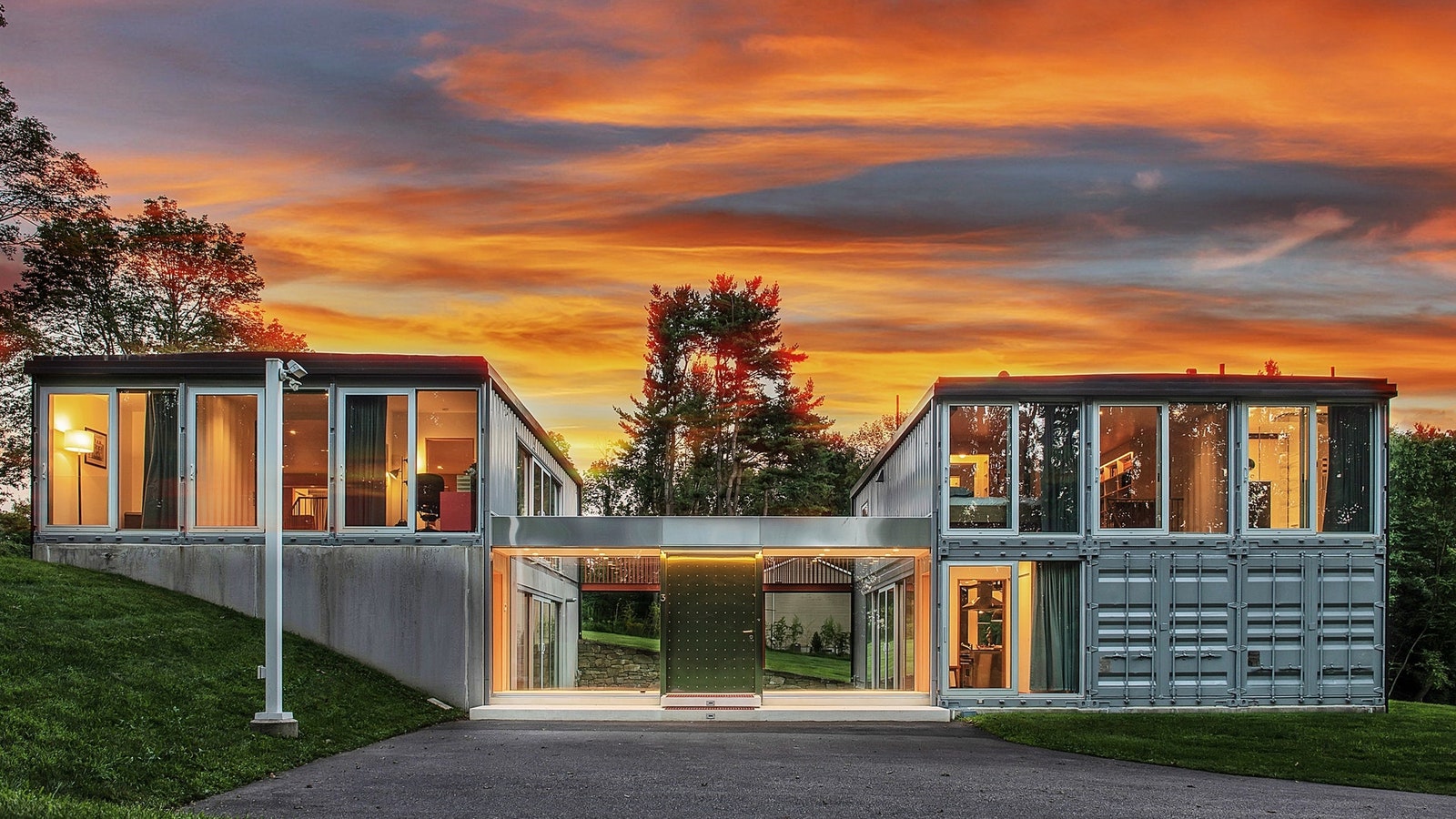The Appeal of 4-Bedroom Container Homes

The popularity of container homes is on the rise, driven by their sustainability, affordability, and unique architectural possibilities. A 4-bedroom container home offers a practical and stylish solution for families and individuals seeking spacious living, making it a compelling choice in the contemporary housing market.
Advantages of 4-Bedroom Container Homes
Container homes provide a range of benefits, making them an attractive option for various lifestyles and preferences. These benefits include:
- Durability: Constructed from robust steel, container homes are inherently durable and can withstand harsh weather conditions. They are resistant to pests, fire, and mold, making them a long-lasting investment.
- Speed of Construction: Container homes can be built significantly faster than traditional homes, as the basic structure is already prefabricated. This reduces construction time and costs, allowing homeowners to move in sooner.
- Environmental Friendliness: Repurposing shipping containers reduces waste and minimizes the environmental impact of construction. This aligns with the growing trend of sustainable living and reduces the carbon footprint of housing.
- Cost-Effectiveness: Container homes can be significantly more affordable than traditional homes, especially when considering the cost of materials and labor. The prefabricated nature of containers allows for efficient construction, resulting in lower overall expenses.
- Flexibility and Customization: Container homes offer a high degree of flexibility and customization. The modular nature of the containers allows for various configurations, accommodating different layouts and designs to suit individual needs and preferences.
Design and Layout Considerations

Designing a 4-bedroom container home presents a unique challenge, demanding creative solutions to maximize space and functionality within the limited square footage. The layout of the home plays a crucial role in creating a comfortable and efficient living environment.
Layout Configurations
The arrangement of containers within a 4-bedroom container home can significantly impact the flow and functionality of the space. Several common configurations are employed, each with its own advantages and disadvantages.
- Linear Configuration: In this layout, containers are arranged in a straight line, often with bedrooms at one end and living spaces at the other. This configuration is simple and straightforward, maximizing space utilization for a more open feel.
- L-Shaped Configuration: An L-shaped layout offers a more compact footprint, with containers forming a corner. This configuration can create a sense of privacy for bedrooms while maximizing space for common areas.
- U-Shaped Configuration: A U-shaped layout creates a central courtyard or outdoor living space, offering a sense of openness and natural light. This configuration is ideal for larger families who desire more communal areas.
Maximizing Space and Functionality
The limited space within a container home requires strategic planning to ensure efficient utilization. Several design strategies can enhance functionality and create a comfortable living environment.
- Multifunctional Spaces: Designing rooms with multiple purposes, such as a living room that doubles as a dining area or a bedroom with built-in storage, can optimize space utilization.
- Vertical Storage: Utilizing vertical space with shelves, cabinets, and loft beds can maximize storage capacity without compromising floor space.
- Open Floor Plans: Removing walls between rooms, particularly in smaller container homes, can create a sense of spaciousness and better flow between areas.
Design Features for Enhanced Living, 4 bedroom container house
Several design features can enhance the living experience in a container home, creating a comfortable and inviting atmosphere.
- Natural Light: Incorporating large windows and skylights can maximize natural light penetration, brightening the interior and reducing the need for artificial lighting.
- Ventilation: Adequate ventilation is essential for maintaining a comfortable indoor temperature and ensuring good air quality. Cross-ventilation systems and strategically placed fans can enhance air circulation.
- Storage Solutions: Built-in storage solutions, such as shelves, cabinets, and drawers, are crucial for maximizing space and keeping the home organized.
Construction and Customization: 4 Bedroom Container House

Building a 4-bedroom container home is a unique and rewarding project. It involves careful planning, efficient execution, and a touch of creativity to transform these sturdy metal boxes into comfortable living spaces.
Construction Process
The construction process of a 4-bedroom container home is similar to building a traditional house, but with some key differences. It typically involves the following steps:
- Site Preparation: The first step is to prepare the site where the container home will be built. This includes clearing the land, grading it, and preparing the foundation.
- Container Delivery and Placement: Once the site is ready, the shipping containers are delivered and placed on the prepared foundation. The containers are carefully positioned and leveled to ensure stability and a smooth building process.
- Container Modification: The containers are then modified to create the desired layout and design. This involves cutting openings for windows and doors, installing insulation, and creating interior walls.
- Electrical and Plumbing Installation: The next step is to install electrical wiring and plumbing systems. This includes running wires and pipes, installing fixtures, and ensuring compliance with local building codes.
- Interior Finishing: Once the structural work is complete, the focus shifts to interior finishing. This includes installing drywall, painting, flooring, and other decorative elements.
- Exterior Finishing: The final step involves completing the exterior of the home. This includes adding siding, roofing, windows, and doors.
Customization Options
Container homes offer a wide range of customization options, allowing homeowners to create a space that perfectly reflects their individual style and needs.
- Material Choices: From the exterior cladding to the interior finishes, homeowners can choose from a variety of materials. For example, you can select sustainable options like bamboo flooring or recycled materials for countertops.
- Finish Options: Customization extends to finishes. For example, you can choose from a range of paint colors, tile styles, and cabinet designs to create a unique look.
- Appliance Selection: Homeowners can select appliances that meet their specific needs and preferences. From energy-efficient refrigerators to smart ovens, the options are vast.
- Layout Design: Container homes can be configured in countless ways. Homeowners can work with architects and designers to create a layout that maximizes space and functionality, with dedicated areas for bedrooms, living spaces, kitchens, and bathrooms.
Role of Professionals
While some aspects of container home construction can be DIY, it’s essential to involve professionals for certain tasks.
- Architects and Designers: Architects and designers play a crucial role in creating a functional and aesthetically pleasing layout, ensuring compliance with building codes, and providing guidance on material choices.
- Contractors: Contractors handle the structural work, including foundation construction, container modification, and installation of electrical and plumbing systems.
- Specialized Tradespeople: Specialized tradespeople, such as electricians, plumbers, and HVAC technicians, are essential for ensuring the proper installation of necessary systems.